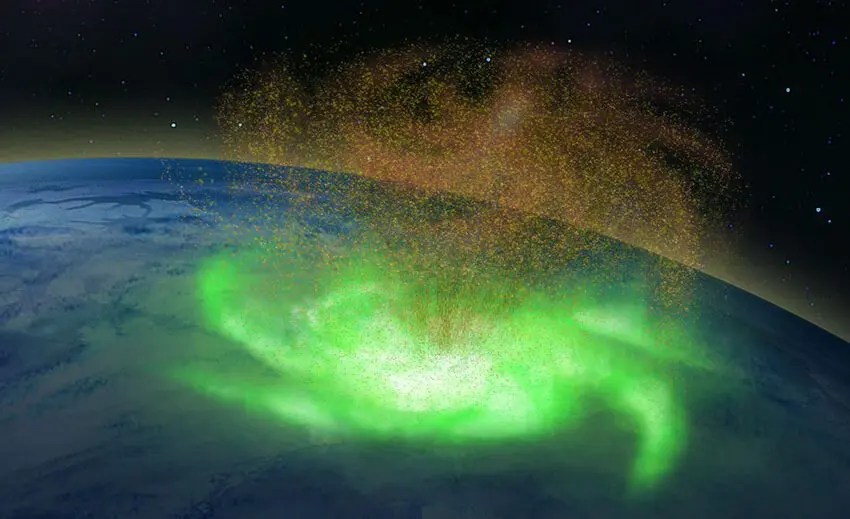A Space Hurricane Observed for the First Time

Illustration of a space hurricane by Shandong University at Weihai in China.
Top image: Illustration of a space hurricane by Shandong University at Weihai in China.
In a new study in Nature Communications by Zhang et al. [2021], the first observations of a space hurricane over the Earth’s polar ionosphere is shown. Two of the co-authors are UNIS director Jøran Moen and professor Kjellmar Oksavik at UNIS and the Birkeland Centre for Space Science in Bergen.
22 February 2021
Press release from the Birkeland Centre for Space Science/University of Bergen and the University Centre in Svalbard.
UNIS adjunct professor Kjellmar Oksavik finds the new results remarkable: “Hurricanes are well-known in the Earth’s lower atmosphere, causing destruction and harm to people and infrastructure. We had no idea that a similar phenomenon could be found in the upper polar atmosphere, several hundred kilometers above the ground.”
The space hurricane was observed on August 20, 2014, when four DMSP (Defense Meteorological Satellite Program) satellites detected a cyclone-like auroral spot around the north magnetic pole, having a diameter over 1000 km with multiple arms and anti-clockwise rotation. After showing its presence for nearly 8 hours, the space hurricane gradually decayed and merged into the duskside auroral oval.
“An intriguing finding is that the space hurricane occurred under conditions associated with very low geomagnetic activity, suggesting that we shouldn’t expect much activity at all” Oksavik explains. “There was a long period of several hours of steady northward interplanetary magnetic field and very low solar wind density and speed. Despite these extremely quiet conditions, the space hurricane funneled high fluxes of energized electrons into the upper polar atmosphere at a comparable level to moderate geomagnetic storms”.
“This highlights the need for better space weather forecasting in the High North, especially for secure, socially critical services based on GPS for HF radio systems,” UNIS director Jøran Moen points out.
The fact that the space hurricane was associated with quiet geomagnetic conditions makes Oksavik believe there may be more space hurricanes to report in the future: “Usually we are not exploring observations under such quiet times, so our findings are indeed exciting. It seems like we may have stumbled upon a new mode of solar wind – magnetosphere – ionosphere coupling that nobody was aware of. We researchers strive every day to understand the intriguing question of “how Earth is coupled to space”. This time I think we have discovered an important new part of the puzzle”.
Link to the scientific article in Nature Communications
